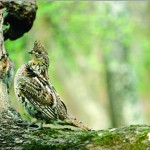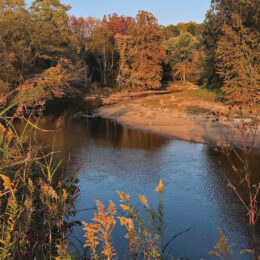By Jack Spaulding
The expansion and reestablishment of many wildlife species in Indiana have been remarkable. Programs of reintroduction and resettlement have brought back eagles, peregrine falcons and osprey to our skies; otters to our rivers and streams; and wild turkey and white-tail deer throughout the entire state.
But among the list of successes there are two glaring cases of disregard … the ruffed grouse and the woodcock.
Grouse were once in plentiful supply across much of Southern Indiana. In the 1950s, they were used as trading stock with other states in exchange for wild turkey for relocation across our Hoosier state. And, woodcock were consistently found in the bag of grouse hunters.
Has the decline been caused by an abundance of predators, poor game regulations or farm practices?
No. The decline is the unintended result of misguided timber management.
The Ruffed Grouse Society reported last year: “The ruffed grouse population in Indiana is in serious trouble due to forest succession away from young forests to middle and older stages of forest development. The amount of intensive vegetative disturbance required to promote young forest habitat, both natural and human caused, is lacking on both private and public lands in the state.”
The Indiana Division of Fish and Wildlife notes that the 2014 drumming surveys did not locate any male ruffed grouse along routes that have been surveyed for decades. The situation on the ground is so dire that ruffed grouse hunting in Indiana has been suspended.
During 2014’s woodcock singing-ground counts, the U.S. Fish and Wildlife Service surveyed 15 routes in Indiana and found a 2.89 percent increase in the number of singing males over the previous year’s result. While this is a positive finding, it is worth noting that American woodcock populations have still declined at roughly 4 percent annually in Indiana since 1968.
With the current lack of young forest habitat creation in the state, on both private and public lands, this trend is likely to continue into the future, the Ruffed Grouse Society said.
Southern Indiana was once an area of successional forest where large tracts of mature timber were removed and new forest growth emerged. Abandoned farm land, now part of the Hoosier National Forest, also added to the mix. The emerging young forest was a dynamic area of regrowth and provided unmatched habitat for ruffed grouse and woodcock as well as many other species including songbirds, deer and wild turkey.
The decline of the two species is directly tied to our state’s change in forestry practice. Due to public pressure from well-intended individuals and conservation groups, Indiana changed its forest harvest to “selective” harvest. This method of “pick and choose” does little or nothing for the creation of habitat necessary for woodcock and ruffed grouse.
We no longer have massive forest fires clearing hundreds and sometimes thousands of acres for regeneration. Only the unsightly method of maximum harvest or clear cut leads to diversified habitat areas needed to maintain or increase ruffed grouse and woodcock populations.
Even while using only selective timber harvest, Indiana’s DNR is challenged at every announced timber cutting by sign-carrying protesters trying to shut down all timber harvest on state and federally-controlled property. To those protesting, only a mature, old growth forest is acceptable.
The protesters are well meaning, but misguided.
We need to leave our forests in the hands of our wildlife managers and forestry biologists and stop management of our state’s natural resources dictated by popular opinion.
Indiana’s 2015-16 hunting season closed all grouse hunting in Indiana in an effort to maintain the last vestiges of our ruffed grouse and delay the species from becoming extirpated in our state.
Jack Spaulding is a state outdoors writer and a consumer of RushShelby Energy living along the Flatrock River in Moscow. Readers with questions or comments can write to him in care of Electric Consumer, P.O. Box 24517, Indianapolis, IN 46224; or email jackspaulding@hughes.net.





